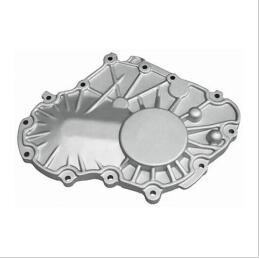The Art and Science of Lost Wax Casting in Iron and Steel
2023-10-17
Introduction
Lost wax casting, also known as investment casting, is a time-honored technique that has been used for centuries to create intricate and precise metal objects. This meticulous process allows craftsmen to produce iron and steel products with remarkable detail and accuracy. In this blog, we will delve into the fascinating world of lost wax casting in iron and steel, exploring its history, applications, and the intricate steps involved in bringing these remarkable creations to life.
The History of Lost Wax Casting
The origins of lost wax casting can be traced back over 5,000 years to ancient Egypt and Mesopotamia. Initially, this technique was used to create intricate jewelry and religious artifacts. Over time, it evolved and spread to various civilizations, including the Greeks, Romans, and Chinese. Each culture added its unique touch to the art, resulting in a rich and diverse history.
Applications of Lost Wax Casting in Iron and Steel
1. Art and Sculpture: Lost wax casting in iron and steel has been a popular choice among sculptors and artists. This method allows for the creation of intricate sculptures and statues, ranging from classical figures to contemporary pieces. The durability of iron and steel ensures that these artworks can withstand the test of time.
2. Jewelry and Ornaments: The precision and fine detailing achievable through lost wax casting make it a preferred method for crafting intricate jewelry, including rings, pendants, and earrings. Steel jewelry, in particular, has gained popularity for its modern and edgy aesthetic.
3. Industrial Parts: The automotive, aerospace, and manufacturing industries often rely on lost wax casting to produce complex and critical components. Iron and steel parts created through this process are known for their high strength and precision, making them suitable for a wide range of applications.
4. Custom Components: Lost wax casting is ideal for creating custom components and prototypes. Engineers and designers can take advantage of the flexibility offered by this method to produce bespoke parts tailored to their specific needs.
The Lost Wax Casting Process
The process of lost wax casting in iron and steel is a carefully orchestrated sequence of steps:
1. Pattern Creation: The process begins with the creation of a wax or plastic pattern, which is an exact replica of the desired final product.
2. Investment: The pattern is encased in a heat-resistant material, often a mixture of plaster and refractory materials. This creates a mold, known as the investment.
3. Wax Removal: The investment mold is heated, causing the wax or plastic pattern to melt and drain out, leaving behind a cavity in the shape of the desired product.
4. Preheating: The empty mold is then preheated to prepare it for the molten metal.
5. Casting: Molten iron or steel is poured into the mold, filling the cavity left by the wax.
6. Cooling: The metal is allowed to cool and solidify within the mold.
7. Breakout: The investment material is broken away, revealing the final metal casting.
8. Finishing: The casting is then cleaned, polished, and any necessary machining or assembly is performed to achieve the desired finish.
Conclusion
Lost wax casting in iron and steel is a blend of artistry and precision engineering, resulting in stunning and functional pieces that have stood the test of time. From intricate sculptures to critical industrial components, the versatility of this ancient technique continues to find applications in diverse fields. Whether you appreciate its historical significance, its role in creating breathtaking artwork, or its contributions to modern industry, lost wax casting remains a captivating and enduring craft.



